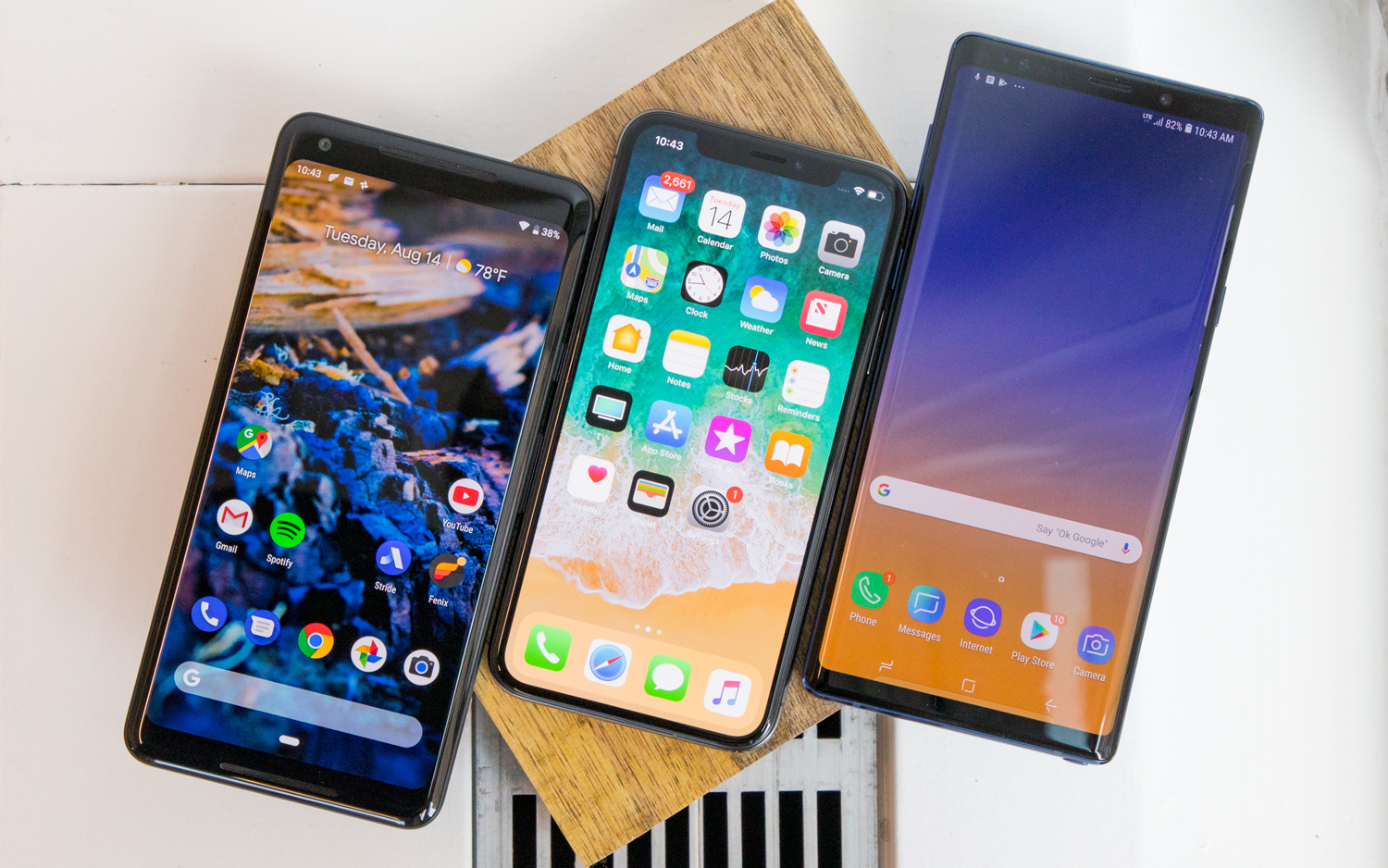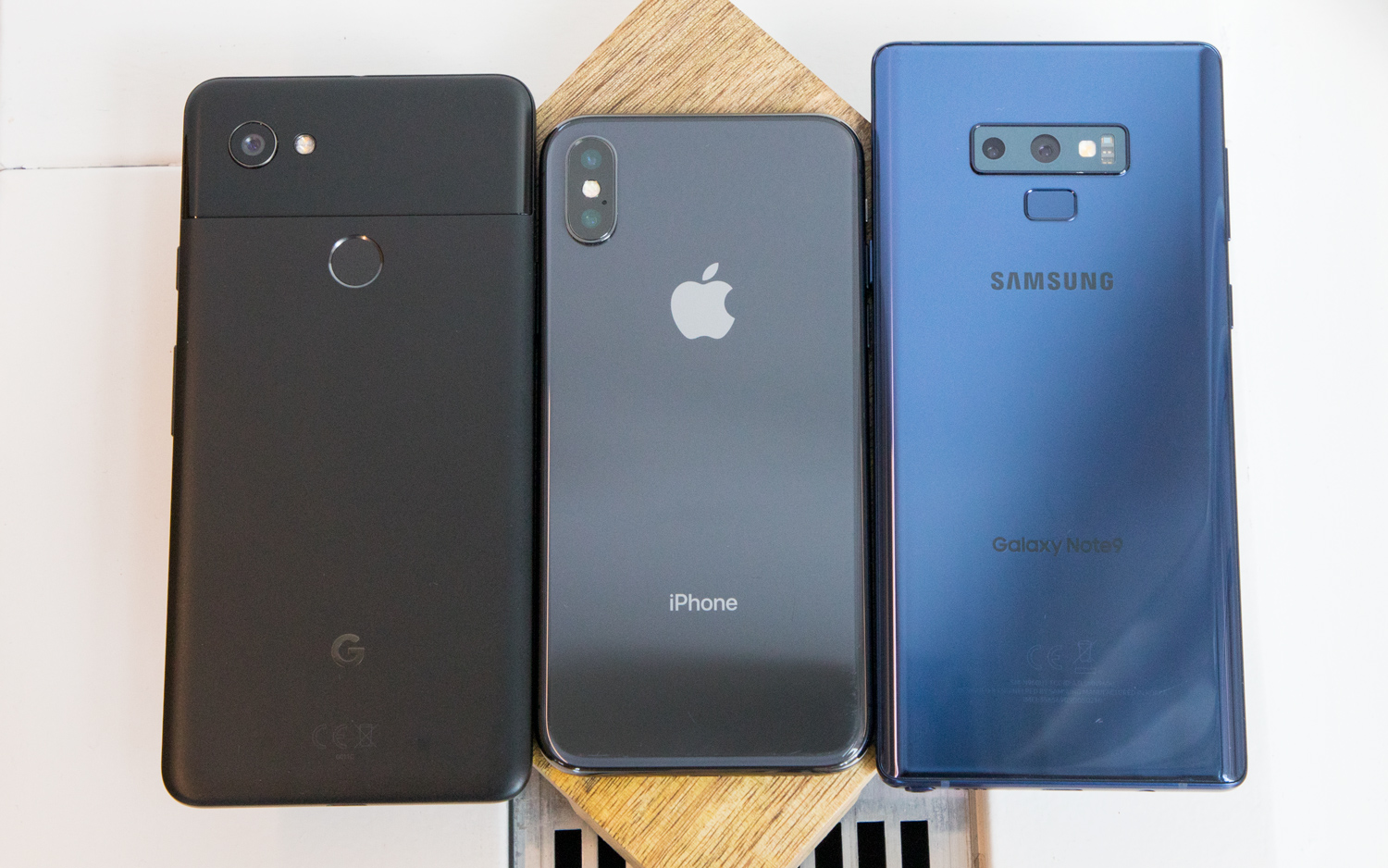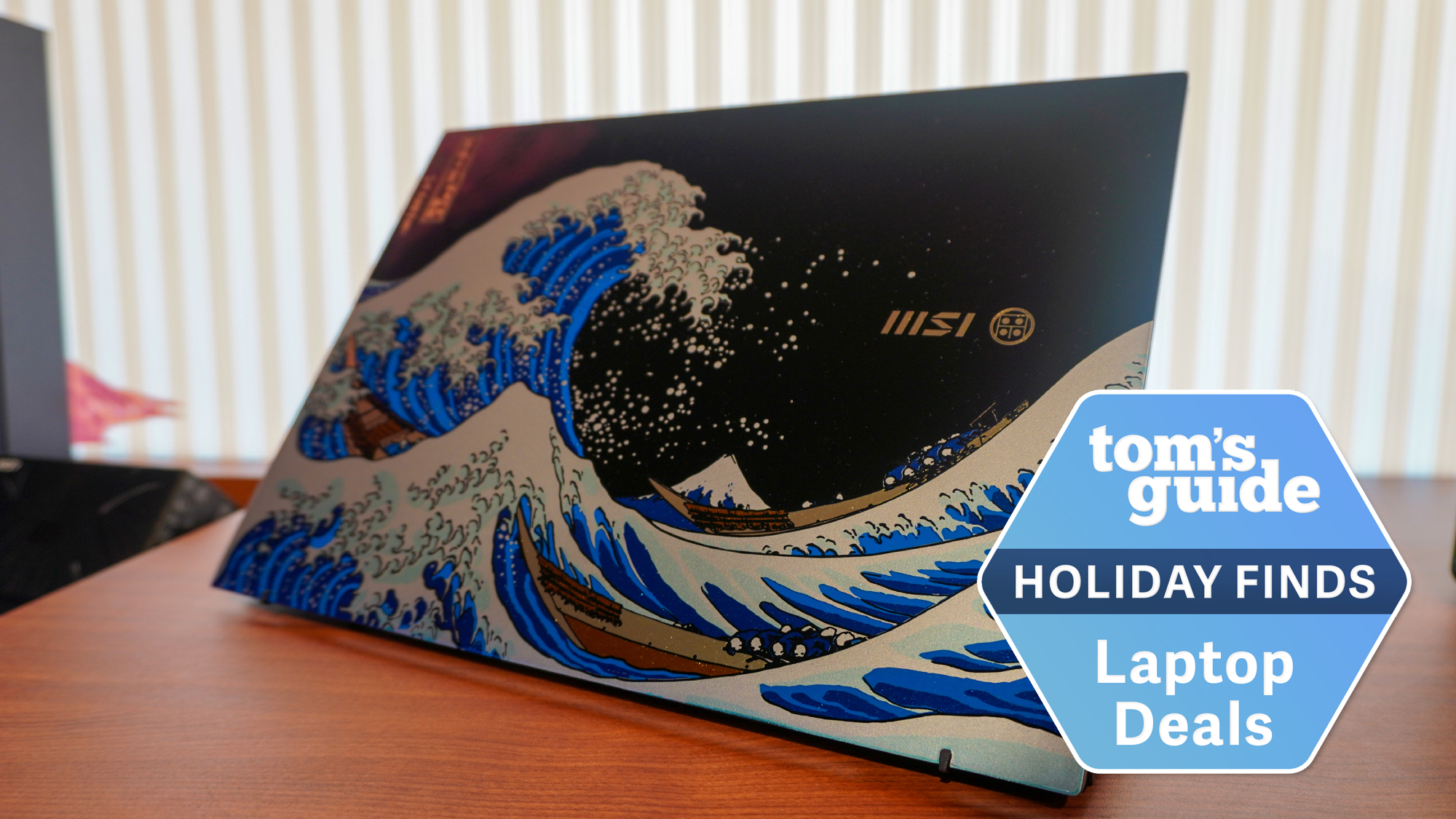Galaxy Note 9 vs. iPhone X vs. Pixel 2 XL: Which Camera Wins?
We compared the dual-lens, AI-enabled cameras in the Note 9 to those in the iPhone X and Pixel 2 XL. Here's how they stack up.
Sometimes, it's hard to believe how quickly mobile cameras have advanced in the past couple of years, as newly launched devices look to outdo the class leaders every few months. Now, it's the Samsung Galaxy Note 9's turn for a shot at the crown.

Armed with a dual-lens, 12-megapixel camera that combines a variable-aperture shooter with a telephoto lens for 2x optical zoom and bokeh-effect portraits, the Galaxy Note 9 borrows much of the technology powering the cameras in the Galaxy S9+. The difference is a new AI-aided Scene Optimizer feature, which identifies your surroundings to tune each shot based on the type of scenario, such as greenery, waterfalls, skyscrapers and, of course, night environments.
We traveled around New York City with Samsung's latest phablet, as well as a Pixel 2 XL and an iPhone X, to determine how the Note 9's dual cameras and Scene Optimizer compare to the best phones for photography.
| Rear Camera | Front Camera | Price | |
| Samsung Galaxy Note 9 | Dual: 12 MP (f/1.5 or f/2.4), 12 MP telephoto (f/2.4) | 8 MP (f/1.7) | $999 (128GB)/$1,249 (512GB) |
| Apple iPhone X | Dual: 12 MP (f/1.8),; 12 MP telephoto (f/2.4) | 7 MP (f/2.2) | $999 (64GB)/$1,149 (256GB) |
| Google Pixel 2 XL | Single: 12.2 MP (f/1.8) | 8 MP (f/2.4) | $749 (64GB)/$849 (128GB) |
We used all three phones to shoot eight photos and then awarded points to each device based on the results. For each round, the winner received 3 points, second place got 2 points and third place earned 1 point. Every photo from the Note 9 was shot with the Scene Optimizer feature turned on. Here's what we found.

Grand Central Station
The main hall of Grand Central Station is one of the most telling tests for any camera, because it has a little bit of everything. There are intense highlights from the clock and backlighting, deep shadows in the corners, fine details in the brick walls and a warm ambience that really puts your shooter's auto white balance and metering on trial.
That makes it an excellent place to start. And right off the bat, we see the Note 9 actually produces a slightly darker frame than what you witness in the iPhone X's and Pixel 2 XL's best efforts. The Note 9's photo is also not quite as sharp, with the lines of the brick walls getting a bit fuzzy in the distance and greater degrees of noise appearing the farther up you look.
That said, the Note 9 did the best job of reining in the backlighting from the center window, as well as the intensity of the light emanating from the clock and the text underneath it.
Get instant access to breaking news, the hottest reviews, great deals and helpful tips.
Still, the Pixel 2 XL took the victory in this test, with the best balance of brightness, sharpness and realistic colors. Meanwhile, the iPhone X failed, showing a complete inability to navigate those highlights. View full-size image
Round #1: Grand Central Station
1st place: Pixel 2 XL
2nd place: Galaxy Note 9
3rd place: iPhone X
Greenery
Another AI-suggested scene for the Note 9 pertains to greenery, and that's what the camera suggested for this round, shot in Bryant Park.
This one's tough, as all the phones produced great pictures, albeit in different respects. The Note 9 nailed the contrast, with strong shadows producing a sense of depth that other devices lacked. However, the decidedly cool white balance was far from ideal. The Pixel's shot was free of noise and conveyed rich color from the pink roses, but it was also the darkest of the bunch. Meanwhile, the iPhone turned in another photo that exhibited its penchant for the brightest images, though the roses ended up far too blown out.
Once again, it was Google's phone that got the closest to the actual conditions and replicated the warmth we witnessed at the time. However, the Note 9's strong detail earns it a well-deserved second place. View full-size image
Round #2: Greenery
1st place: Pixel 2 XL
2nd place: Galaxy Note 9
3rd place: iPhone X
Portraits
Interestingly, Scene Optimizer applies only in the Note 9's Auto shooting mode. Once you try a Live Focus shot — Samsung's portrait mode by another name — AI doesn't play a factor.
Still, the Note 9 delivered a solid shallow depth-of-field portrait of my colleague Caitlin. The detail wasn't quite up there with the Pixel's, and Caitlin's skin tone was a bit lighter than in real life — a factor both Google's and Apple's handsets addressed. However, I like the brightness of the Note's attempt, as it more accurately conveys the light falling on the scene from the window out of frame to the left.
When it came to the background blur, though, only the Pixel got it right. The iPhone strangely blurred out Caitlin's hair, while the Note 9 mostly fared better but preserved the pillar to the left perfectly in focus. That created some odd artifacting near her ear, where you can clearly see the point where Live Focus' software unconvincingly began applying the bokeh effect. It's a small mistake that brought down an otherwise great portrait. View full-size image
Round #3: Portraits
1st place: Pixel 2 XL
2nd place: Galaxy Note
3rd place: iPhone X
Skyline
We headed back to Bryant Park for some lovely shots of skyscrapers on a summer evening. And once again, the iPhone and Note committed the same cardinal sin, by washing out the entire frame in an attempt to keep the darker regions visible.
For this particular example, the Note 9 employed its backlighting AI mode, which pumped up the saturation ever so slightly against the bright summer sky. Samsung's superwide f/1.5 aperture pulled in detail from the depths of those trees, but it was a bit overzealous with the grass and the building to the left, which should have been more beige than gray.
Remember, this was the beginning of dusk on a sunny day, so the cool haziness that Samsung's and Apple's HDR software dialed into the scene didn't really apply, giving the Pixel another W. View full-size image
Round #4: Skyline
1st place: Pixel 2 XL
2nd place: Galaxy Note 9
3rd place: iPhone X
Bakery
The cinnamon swirl you see below produced wildly different results on the three phones. Neither the Note nor the iPhone could compete with the Pixel's ability to pick up those glimmers of light in the surface of the pastry. Then again, Apple's device managed a brighter and warmer shot, which also painted an appetizing picture in its own right.
The Note 9, on the other hand, dialed the saturation up to 11 for a photo that resembled an Instagram filter gone horribly wrong. The phone knew it was looking at food, but I suspect it didn't account for the particular type of food it was presented with, as the subtle shades of brown transformed into an eye-searing, neon-infused orange.
Thankfully, the effect can be toned down if you opt to switch off the Scene Optimizer. Nevertheless, it's disappointing that the Note 9's headline camera feature actually made a photo objectively worse in this instance. View full-size image
Round #5: Bakery
1st place: Pixel 2 XL
2nd place: iPhone X
3rd place: Galaxy Note 9
Flower
Although you could argue that the Pixel and the iPhone did a better job of capturing the texture of the petals in this nighttime shot of a flower, the subject also appears subtly out of focus on both cameras. It's actually more of an issue on Google's handset, which seemed to have a hard time exposing the details because of the absence of light.
The Note 9's rendition may come across a bit oversaturated for some in our jury. But it's considerably crisper, and the background is significantly more visible, thanks to the Scene Optimizer recognizing that this was a night scene and pumping up the brightness in accordingly. View full-size image
Round #6: Flower
1st place: Galaxy Note 9
2nd place: iPhone X
3rd place: Pixel 2 XL
Building
During the bulk of this face-off, I struggled to find examples in which the Note 9's AI processing clearly worked to a scene's benefit. Thankfully, all that changed once we started shooting photos at night.
In low light, the Note 9's Scene Optimizer, combined with that superwide f/1.5 aperture setting, can pull off some amazing tricks. Notice how it renders each leaf of the trees overhead in far better clarity than the iPhone or the Pixel. You can actually make out the shades of green that make up the canopy. The facade of the building is also properly exposed, highlighting the terra-cotta hue of the stone. In the other two attempts, the building just looks vaguely gray. View full-size image
Round #7: Building
1st place: Galaxy Note 9
2nd place: Pixel 2 XL
3rd place: iPhone X
Ticket Counter
Perhaps you're noticing a theme here. The Note 9's cameras are good, but they prioritize visibility in low light more highly than accurate color, which is every bit as important.
If the Note 9 and iPhone X have one advantage over Google's phone, it's their telephoto lenses. The Pixel 2 offers only a single lens, so it can't switch to a secondary camera for optical zoom. That results in a blurry mess when you try to pinch for close-ups on faraway subjects, as we were forced to do here.
You could argue that the other two phones' cameras are more versatile for that reason, despite their faults. And the Note 9 demonstrated the benefit of its second lens with a crisp, evenly lit picture of a few ticketing stalls inside Grand Central Station. Everything's well exposed, and Samsung's shot was by far the least noisy of the bunch — though the clarity of the text on the boards in the iPhone's attempt helped Apple's hardware win back some credit here. View full-size image
Round #8: Ticket Counter
1st place: Galaxy Note 9
2nd place: iPhone X
3rd place: Pixel 2 XL
Overall Winner: Google Pixel 2 XL
Samsung has once again developed an excellent low-light shooter, and the Note 9 also produced a better-looking flower close-up than the competition. However, for most other occasions, outdoors or in, the Pixel 2 XL still edges out Samsung's flagship. Meanwhile, the iPhone X has seen its stock diminish as progressively better mobile cameras have hit the market.
Of course, that could change in September, when we see what Apple's been cooking up for the cameras in the next batch of iPhones. But as it stands now, we've seen everything Samsung's flagships have to offer in 2018, and although the Note 9's cameras are very good, the company still has a little work to do to take the lead — particularly when it comes to HDR and, of course, those new AI features.
| Galaxy Note 9 | iPhone X | Pixel 2 XL | |
| Grand Central | 2 pts | 1 pt | 3 pts |
| Greenery | 2 pts | 1 pt | 3 pts |
| Portraits | 2 pts | 1 pt | 3 pts |
| Skyline | 2 pts | 1 pt | 3 pts |
| Bakery | 1 pt | 2 pts | 3 pts |
| Flower | 3 pts | 2 pts | 1 pt |
| Building | 3 pts | 1 pt | 2 pts |
| Ticket Counter | 3 pts | 2 pts | 1 pt |
| Overall | 18 pts | 11 pts | 19 pts |
Most of the time in our testing, the Note 9 produced shots that were a bit too blown out, overly cool and not quite as sharp as they should have been. Scene Optimizer proved to be a revelation when things got really dark outside, but otherwise, it tended to pump colors up too vividly, consequently producing less-realistic results.
That leaves us with a simple verdict: If you want the best phone for taking photos of a night on the town, the Note 9 is a stellar choice. But if you want the best phone for taking photos everywhere else, the answer remains the Pixel 2 XL — at least for now.
Credit: Tom's Guide
Adam Ismail is a staff writer at Jalopnik and previously worked on Tom's Guide covering smartphones, car tech and gaming. His love for all things mobile began with the original Motorola Droid; since then he’s owned a variety of Android and iOS-powered handsets, refusing to stay loyal to one platform. His work has also appeared on Digital Trends and GTPlanet. When he’s not fiddling with the latest devices, he’s at an indie pop show, recording a podcast or playing Sega Dreamcast.
-
mhartman.art I realize this is going to sound rude, but Adam really isn't qualified to be judging what technically consitutes a good image. He's giving his subjective opinion or preference, and that's totally fine, but as a photographer/cinematographer he draws on things that aren't really important in creating a compelling image. Photography, even in a ametuer sense, is much more than just documenting a moment in time. I find this review and so many like them very, very literal void of even basic photography principles. I don't own any of the phones featured in this review so I have no horse in this race, I'm just trying to warn consumers that this review is not conclusive nor definitive by any means.Reply
Photography is more about storytelling, not "accurate" colors, unless skintones are distractingly off base, which for any of these phones is not the case. Most consumers are going to alter their snaps with aggressive filters anyway.
Also, just a small shift of light could alter results from the same scene and device, meaning exposure values and white balance.
I find these reviews to be highly annoying and slightly misleading. Instead, the consumer would be better served learning things like composition and leading line. When to use portrait, when to use landscape. Creating depth, texture. Proper lighting. All photographs benefit from these basic principles and lead to better photographs regardless of which camera is capturing it. They are not difficult to understand or use. Before you run out and buy the latest phone, instead buy a basic photography how to. -
bobdupuu Good review. Consistent with every other like comparison I have seen. I do have a hard time seeing the blurry mess created by the Pixel 2XL in the ticket counter comparison. To me it looks about the same as the photo taken by the iPhone X.Reply








